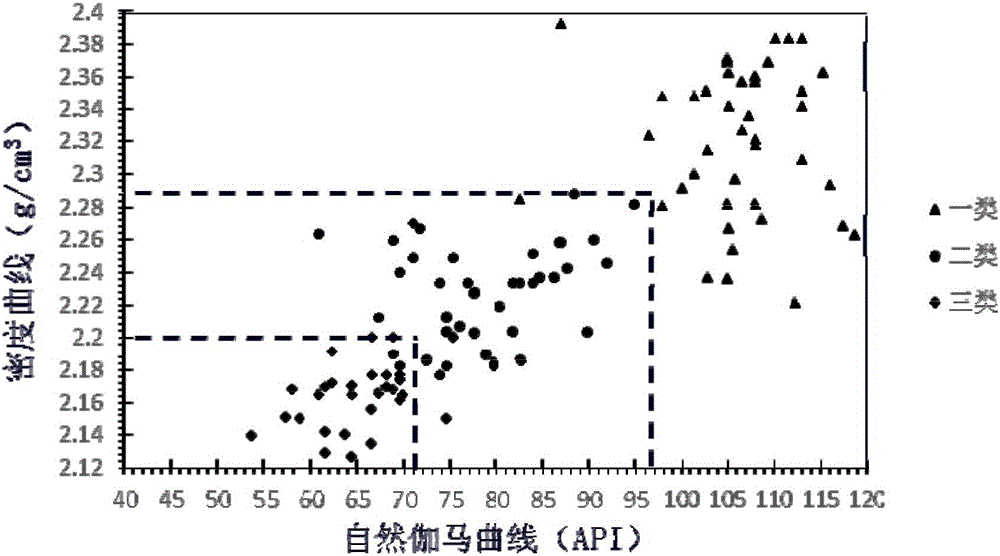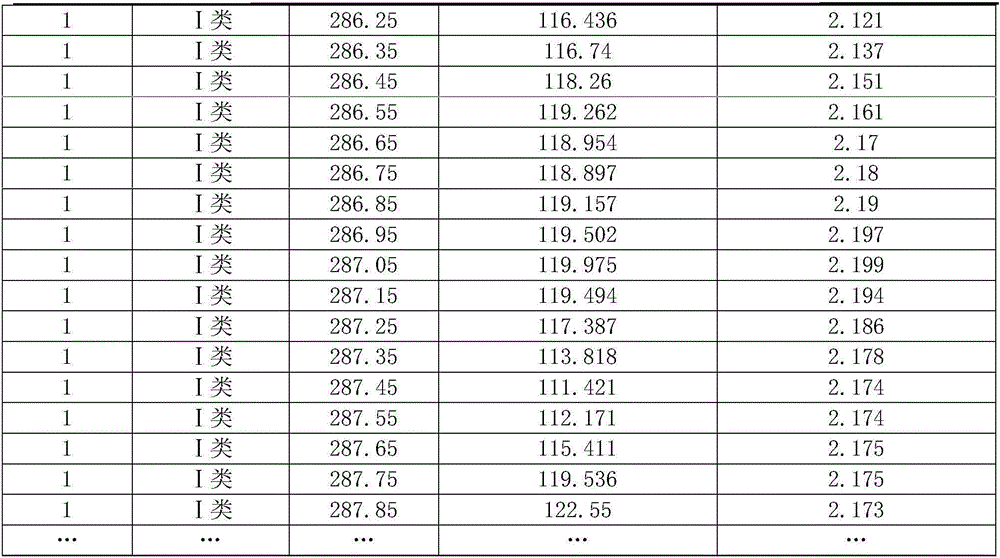Quantitative classification and identification method for oil sand interlayers
A technology of classification identification and interlayer separation, applied in the field of identification, can solve the problems of strong uncertainty of results, high requirements, high costs and expenses, and achieve the effect of simple and fast method, accurate and reliable results, and reduction of human factors
- Summary
- Abstract
- Description
- Claims
- Application Information
AI Technical Summary
Problems solved by technology
Method used
Image
Examples
Embodiment Construction
[0014] The present invention will be described in detail below in conjunction with the accompanying drawings and embodiments.
[0015] The present invention proposes a method for quantitatively classifying and identifying oil-sand interlayers, which comprises the following steps:
[0016] 1) The interlayers in coring wells are divided into Type I interlayers, Type II interlayers and Type III interlayers.
[0017] Since the classification technology of interlayers is an existing technology, the classification process will not be discussed here, and only the characteristics of the three types of interlayers will be briefly introduced: Type I interlayers, whose lithology is mudstone, pure black, with many cracks, thickness More than 4 meters, mainly distributed in meandering rivers; Type II interlayers, the lithology is a frequently interlaced combination of mudstone and sandstone, mostly brown, with a thickness of less than 4 meters, mainly developed at the edge of meandering ri...
PUM
 Login to View More
Login to View More Abstract
Description
Claims
Application Information
 Login to View More
Login to View More - R&D
- Intellectual Property
- Life Sciences
- Materials
- Tech Scout
- Unparalleled Data Quality
- Higher Quality Content
- 60% Fewer Hallucinations
Browse by: Latest US Patents, China's latest patents, Technical Efficacy Thesaurus, Application Domain, Technology Topic, Popular Technical Reports.
© 2025 PatSnap. All rights reserved.Legal|Privacy policy|Modern Slavery Act Transparency Statement|Sitemap|About US| Contact US: help@patsnap.com



